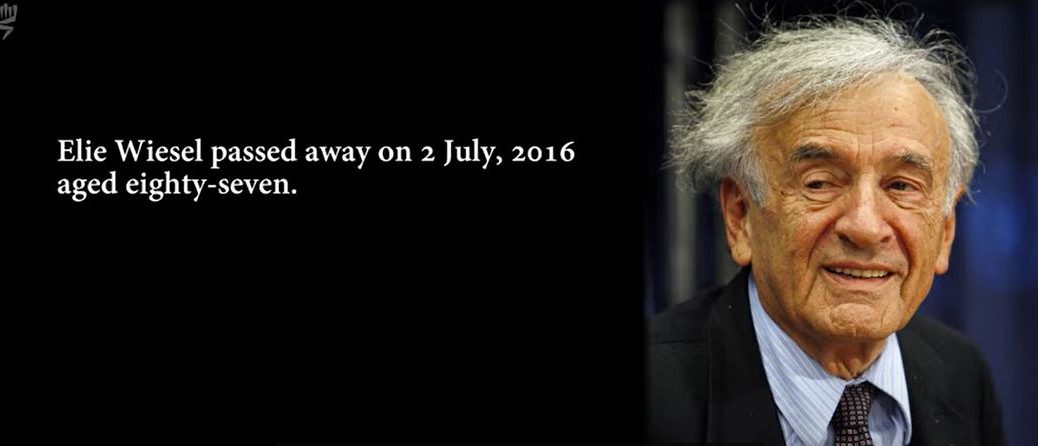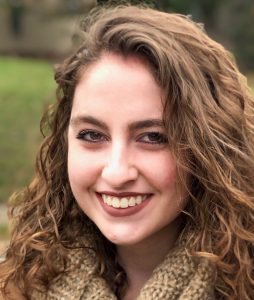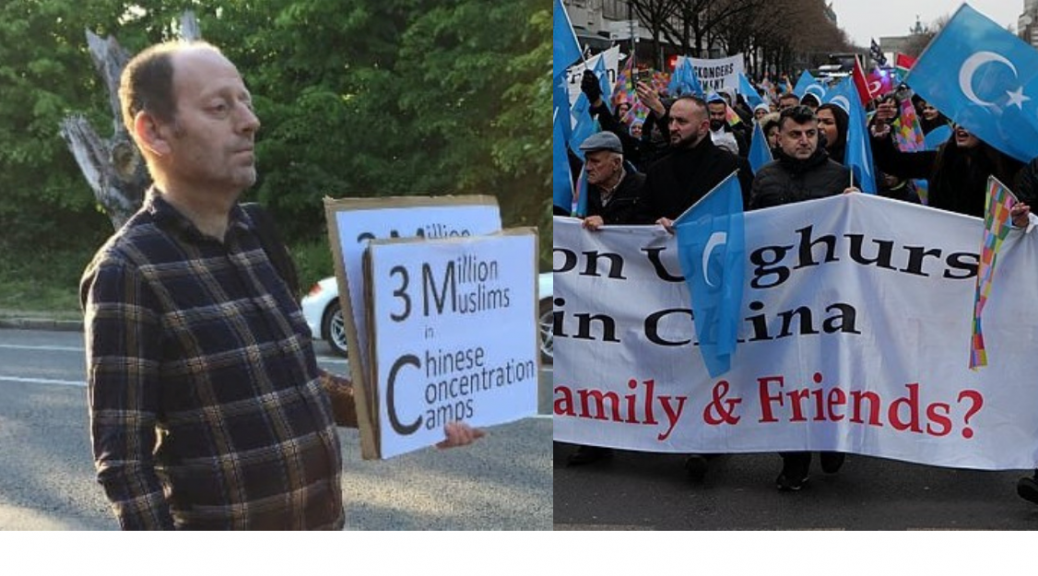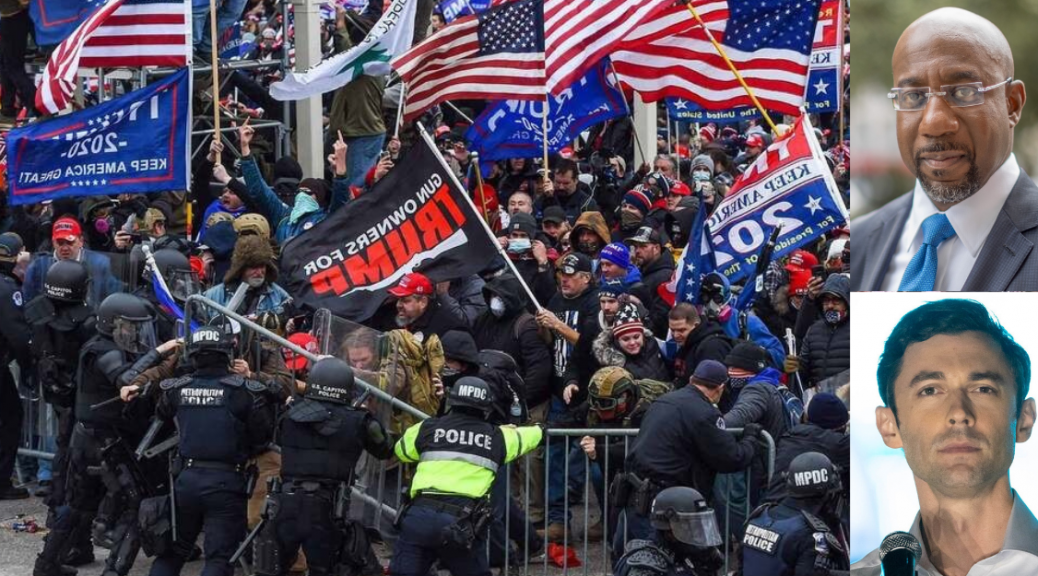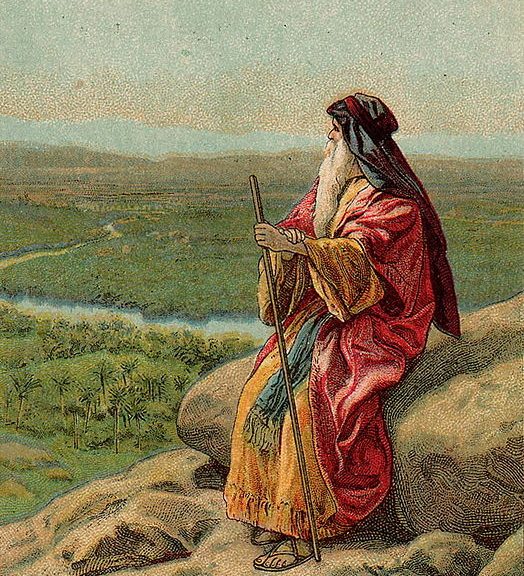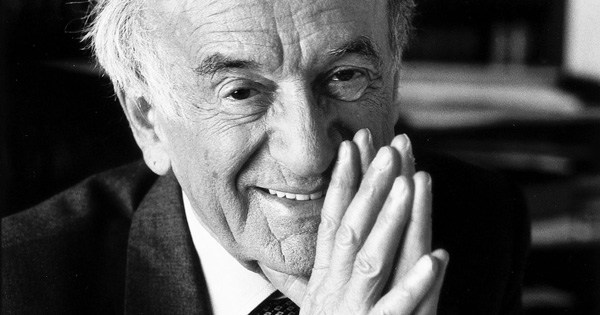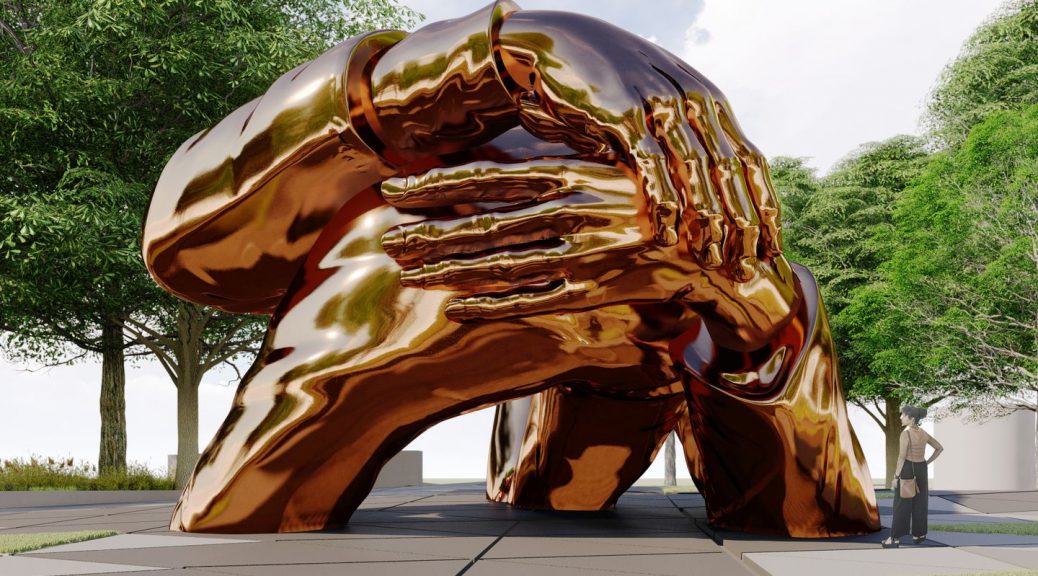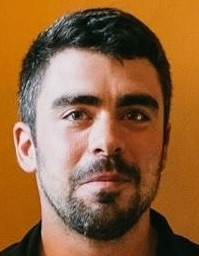 by Benjamin J. Austin, a PhD candidate at Boston University specializing in the philosophy of digital religion.
by Benjamin J. Austin, a PhD candidate at Boston University specializing in the philosophy of digital religion.
Wednesday morning (1/6/2021), prior to the Trumpist insurrection, I was preparing the syllabus for my undergraduate writing seminar on “Tricksters and the Invention of Religion.” The title is an intentional provocation to students. It is based on Carole Cusack’s notion of “invented religions,” a category with origins in mid-century American counterculture, live-action role play (e.g., Dungeons & Dragons), fan fiction, and the complex, intertwined worlds of game and film-based subcultures. Some prefer to call such phenomena “consumer religion,” “postmodern” or “meta modern” religion, or “remix religion,” all with good reason. The fun in calling them “invented religions” lies in the fact that students tend to read Cusack as implying that there are religions that are not invented. The traditions we often call “world religions” retain a special degree of authenticity, if simply because their historical narratives and truth claims are so far in the past as to be impervious to allegations of “fake news.” My goal is not to convince students that ancient or “axial age” religious figures were every bit as coercive and corrosive as Jim Jones or Osama Bin Laden, but to expose a peculiar contemporary bias against invention as a religious act. Too many assume that if a religious movement is so new that we can trace its emergence, it is a fad at best, and a cult at worst. This is a strange assumption; imagine thinking that access to blueprints would render a house uninhabitable. Cusack’s invented religions are nothing more or less than religious movements that implicitly understand, and sometimes explicitly emphasize, that their recent vintage and countercultural orientation are no impediment to meaning-making, community organizing, mystical exploration, and spiritual fulfillment. Our mistake has long been to insist that religious traditions are, or ought to be, in the business of uncovering and preserving “truths,” or, more recently, “facts.”
This way of thinking blinds us to a reality that we can no longer afford to ignore: new religious movements are everywhere, especially online. The prominence of conspiracy theory and unbridled groupthink has rendered the Internet, to borrow a phrase from Henri Bergson, “a machine for the making of gods.” The novelty of such gods does not mean that they will not take hold, or that their devotees are not perfectly capable of waltzing into the U.S. Capitol through ranks of sluggish and/or sympathetic law enforcement officers, leaving menacing notes on Nancy Pelosi’s desk, and sabotaging vital democratic processes. The late Robert Anton Wilson – a prominent proponent of Discordianism, which is perhaps the prototypical invented religion – used to say that “reality is what you can get away with.” This appears to be truer of political reality than many of us might have anticipated, even just one week ago.
Americans saw unfamiliar flags, symbols, and slogans alongside more familiar Christian nationalist insignia like the ichthys (Jesus fish) at the Capitol on January 6th. We also listened to news anchors decry the “crackpot” and “baseless” QAnon conspiracy theory. QAnon’s currency with the Trumpist rioters was evident for those who know what to look for – a sweatshirt bearing a large “Q,” a banner inviting us to “Trust the Plan” or “Save the Children,” and, at the front of the unruly mob a bare-chested, heavily tattooed figure wearing face paint and a horned fur hat. This man - Jake Angeli – is known in QAnon circles as “the Q Shaman.” Thus the question arises: are we confronting a neo-shamanic fascist cult born in the digital wilderness or perhaps a more familiar iteration of American Christianity fallen prey to the temptations of chauvinism?
American conspiracy theory is a strange genre, perhaps best thought of as a kind of secular eschatology (reasoning about “last things,” i.e., the end of the world or at least the status quo). As such, it draws at once on contemporary (“secular”) and ancient (“religious”) sources for inspiration. QAnon is no exception here. Beginning in October of 2017, QAnon emerged on the online message board 4Chan as a kind of meta-conspiracy or “big tent” conspiracy theory intended to identify the root cause of governmental corruption and social degeneration. The basic QAnon thesis is that the world is run by a cabal of Satanic pedophiles who harvest the adrenalized blood of their young victims in order to consume a concoction – “adrenochrome” – which allows them to live (and therefore rule) in perpetuity. Major figures accused of belonging to this class of elites include Bill and Hillary Clinton, Bill Gates, George Soros, and the Rothschild family. Q supporters stormed the Capitol last week (alongside more cynical and opportunistic comrades) because they sincerely believe President-elect Joe Biden and Vice President-elect Kamala Harris to be members of this vile coterie.
In many respects, QAnon is an outgrowth of the patriot movement, which sprang up during the 1990’s in response to the Clinton administration’s push for increased gun control as well as two disastrous showdowns between federal agents and Christian/White Nationalist extremists at Ruby Ridge (1992) and the Branch Davidian compound in Waco, Texas (1993). The patriot movement drew mythological and eschatological inspiration from the work of Milton William (“Bill”) Cooper, especially Behold a Pale Horse. Oklahoma City bomber Timothy McVeigh considered himself a “patriot” in Cooper’s sense, a guerilla warrior combatting excessive federal overreach into the lives of American citizens. Cooper himself espoused a kind of libertarian equality for Americans, regardless of race, religion, gender, sexual orientation, etc. and denounced McVeigh’s violence and racism. Still, Cooper’s decision to reprint the notoriously anti-Semitic Protocols of the Elders of Zion in Behold a Pale Horse has only fanned the flames of ethnonationalism in the patriot movement since his death in 2001. To this day, the movement only partially overlaps with White and Christian nationalist movements in the United States; Bill Cooper, in fact, enjoys a certain cachet in segments of the black community, notably the Five-Percent Nation. I would encourage anyone interested in the history of the patriot movement to check out Mark Jacobson’s Pale Horse Rider: William Cooper, the Rise of Conspiracy, and the Fall of Trust in America.
I attribute QAnon’s success as a conspiracy theory to its participatory character as well as a certain complicity on the part of producers of popular culture. “Q” refers to an anonymous poster on 4Chan (subsequently migrating to 8Chan and then 8Kun) who periodically posts “Q drops” – highly cryptic and sometimes entirely nonsensical missives concerning an ongoing attempt on the part of Donald Trump and his allies in the upper echelons of government to sabotage the “deep state” and expose the Satanic cabal. Q followers coordinate to decipher and interpret (or “bake”) Q drops to discern what is happening behind the scenes of the political arena and the corrupt corporate media. QAnon gives adherents the opportunity to participate in a detective drama and Armageddon – a final battle between forces of good and evil – at the same time. Followers often explicitly celebrate that their lives become more meaningful, interesting, and cinematic upon joining the movement. A couple prominent QAnon slogans – “Where We Go One, We Go All” (WWG1WGA) and “the Calm Before the Storm” – are in fact ripped directly from Ridley Scott’s 1996 film White Squall. In general, Q supporters display little self-awareness about the extent to which their cinematic experience of the movement follows dependably from the movement’s reliance on cinematic narratives for structure. In other words, QAnon blatantly models its narratives on (certain kinds of) blockbuster films, and yet Q supporters are routinely mystified and enchanted when “reality” turns out “just like a movie!”
All this indicates that QAnon’s factuality is less important than its galvanizing, participatory function. Above I indicated a certain complicity on the part of corporate producers of popular culture. Much of this is accidental – the eschatological structure of Q’s narrative allows supporters to reach back into the annals of film and television and conclude that pretty much any representation of a hero taking on shadowy government forces on behalf of democracy (think: The X-Files, National Treasure, Outbreak, etc.) was a prophetic warning, or perhaps an early attempt at public disclosure. More insidious is the ongoing decision of media outlets such as History Channel and Gaia.com to capitalize on generic, formulaic, and vague insinuations of conspiracy. The narrator of Ancient Aliens, for instance, might not explicitly say that the Satanic pedophile deep state is responsible for suppressing information about extraterrestrials, but someone certainly is. In other words, the show’s formula is successful precisely because it allows armchair historians to fill in the conspiratorial blanks episode after episode in any number of idiosyncratic directions. The viewer is encouraged to feel both more intelligent and less trusting of established academic and political authorities. The result of such programming, as QAnon hero General Michael Flynn so darkly puts it, is that “the American people [have] decided to take over the idea of information.” One wonders which Americans he means.
I mentioned QAnon’s demonization of the Rothschilds above, which ought to set off familiar anti-Semitic alarm bells. Somewhat more difficult to discern is the fact that QAnon is ultimately a contemporary iteration of “blood libel.” The blood libel was a family of medieval conspiracy theories alleging that Jews ritually sacrificed Christian children every Easter in order to ensure return to Jerusalem. QAnon is deeply anti-Semitic at its core, though many followers lack the historical awareness to identify this, and many opponents are (rightfully) concerned with the various other modalities of hate (anti-black racism, xenophobia, homophobia, transphobia, etc.) endemic to the movement. The erasure of this anti-Semitism in some ways speaks to the “ancient” inspiration of QAnon’s eschatology. Many contemporary American evangelical readers of the Book of Revelation– with ahistorical blinders supplied by e.g., Tim LaHaye and Jerry B. Jenkins, authors of the Left Behind series – assign a marginal role to Jews during the End of Days, one largely contingent upon their conversion by some admixture of rhetoric and violence. More proto- than anti-Christian to the evangelical QAnon mind, the Jewish people remain peripheral to the drama unfolding between Christian patriots and the Deep State. This is in contrast to other more urgent and “evil” threats posed by LGBTQ+, Islamic, and racial justice activist communities. What makes QAnon all the more disturbing, then, is that card-carrying, blood-libelous Neo-Nazis can march alongside relatively oblivious evangelicals, Instagram wellness gurus, and Reptilian-fearing new agers* without anyone experiencing a modicum of cognitive dissonance. The “Satanic pedophiles” trafficking our children are Jewish for those who want them to be, and “elitists,” “globalists,” or “Illuminati” for those who would rather not think of themselves as anti-Semitic. By dint of historical ignorance, this modern blood libel expands to encompass ever more non-Christian, non-White groups.
Is QAnon a new digital religious movement or an extremist sect with deep historical roots in mainstream Christendom? The answer is yes. We can attribute its existence to the effects of the post-truth media environment and/or we can perceive the strong resonances of Tertullian’s “prorsus credibile est, quia ineptum est” (“it is certain because it is absurd”) and Paul of Tarsus’ conviction that the proclamation of “Christ crucified” would be “a stumbling block to Jews and foolishness to Gentiles” (1 Corinthians 1:23). I recommend Tara Isabella Burton’s theory of “remix religion” in Strange Rites: New Religions for A Godless World as a tool for thinking through this bizarre duality and the convergence of ancient and modern religious sensibilities on this belief in absurdity for its own sake. In any case, we must recognize that QAnon does not care whether its theories are “real” or “invented.” The price of ideological admission– believing patent absurdities – is high enough to create an uncommonly strong sense of camaraderie in the face of persecution. Q’s predictions and supporters’ interpretations will have been proven real and true (for them) in all relevant senses if and when QAnon assumes power and squashes dissent. We shouldn’t assume that they won’t; it has happened before. More and more otherwise “normal” and “respectable” people are falling under its spell and, in truth, I don’t know what to do about it. That said, education is never a bad start. What follows is a list of resources that you might find useful for understanding what’s happening in our country right now, and perhaps also for deprogramming friends and family members who may be succumbing to the lure of easy answers, empty revolt, and corrosive hatred.
*Prominent British conspiracy theorist David Icke circumvents the anti-Semitism of the Protocols by claiming that the text actually refers to shape-shifting Reptilian extraterrestrials.
Articles
Jerusalem Post – “Capitol Riots – What Far-Right Hate Symbols Were on Display?” by Laura E. Adkins and Emily Burack
The Atlantic – “The Prophecies of Q: American Conspiracy Theories Are Entering a Dangerous New Phase,” by Adrienne LaFrance
The Conversation – “QAnon and the storm of the U.S. Capitol: The Offline Effect of Online Conspiracy Theories,” by Marc-André Argentino
Anti-Racism Daily – “Condemn QAnon,” by Nicole Cardoza
Teen Vogue – “QAnon Conspiracy Theories Are Driving Families Apart,” by Fortesa Latifi
“How to Convince Loved Ones to Change Their Political Perspectives,” by Sophie Vaughn
Podcasts
QAnon Anonymous
- The first episode of this podcast provides an excellent overview of QAnon and their most recent episode covers the events at the Capitol. I cannot recommend their work enough for those interested in developing a holistic and critical understanding of contemporary conspiracy culture.
Books
A lot of People are Saying: The New Conspiracism and the Assault on Democracy, by Nancy L. Rosenblum and Russell Muirhead
Alt-Right: From 4Chan to the White House, by Mike Wendling
Antisocial: Online Exremists, Techno-Utopians, and the Hijacking of the American Conversation, by Andrew Marantz
A Rumor about the Jews: Conspiracy, Anti-Semitism, and the Protocols of Zion, by Stephen Eric Bonner
Blood Libel: On the Trail of an Antisemitic Myth, by Magda Teter
Conspiracies and Conspiracy Theories in the Age of Trump, by Daniel C. Hellinger
Culture Warlords: My Journey Into the Dark Web of White Supremacy, by Talia Lavin
Cyber Racism and Community Resilience: Strategies for Combating Online Race Hate, by Andrew Jakubowicz, Kevin Dunn, Gail Mason, Yin Paradies, Ana-Maria Biluc, Nasya Bahfen, Andre Oboler, Rosalie Atie, and Karen Connelly
Cyber Racism: White Supremacy Online and the New Attack on Civil Rights, by Jessie Daniels
Everything You Love Will Burn: Inside the Rebirth of White Nationalism in America, by Vegas Tenold
Handbook of Conspiracy Theory and Contemporary Religion, Edited by Asbjørn Dyrendal, David G. Robertson, and Egil Asprem
Hate in the Homeland: The New Global Far Right, by Cynthia Miller-Idriss
Neoreaction a Basilisk: Essays On and Around the Alt-Right, by Elizabeth Sandifer
Pale Horse Rider: William Cooper, the Rise of Conspiracy, and the Fall of Trust in America, by Mark Jacobson
Plots, Designs, and Schemes: American Conspiracy Theories from the Puritans to the Present, by Michael Butter
Proud Boys and the White Ethnostate: How the Alt-Right is Warping the American Imagination, by Alexandra Minna Stern
Race After Technology: Abolitionist Tools for the New Jim Code, by Ruha Benjamin
Race After the Internet, Edited by Lisa Nakamura and Peter A. Chow-White
Red Pill, Blue Pill: How to Counteract the Conspiracy Theories That Are Killing Us: by David Neiwert
Republic of Lies: American Conspiracy Theorists and their Surprising Rise to Power, by Anna Merlan
Strange Rites: New Religions for a Godless World, by Tara Isabella Burton
The Accusation: Blood Libel in an American Town, by Edward Berenson
The Ambivalent Internet: Mischief, Oddity, and Antagonism Online, by Whitney Phillips and Ryan M. Milner
The Nature of Conspiracy Theories, by Michael Butter
You Are Here: A Field Guide for Navigating Polarized Speech, Conspiracy Theories, and Our Polluted Media Landscape, by Whitney Phillips and Ryan M. Milner (forthcoming)
Benjamin J. Austin is a PhD candidate at Boston University specializing in the philosophy of digital religion. He works in the areas of continental philosophy, phenomenology, aesthetics, media theory, ritual theory, and esotericism. He holds a B.A. in International Relations and Religious Studies from Boston University as well as an M. Phil in Interreligious Studies from Trinity College Dublin. Benjamin’s dissertation research brings together media theory, ritual theory, and phenomenology in order to theorize the transition from analog to digital life as a traversal of a liminal state or space—a rite of passage.
Image: AP Photo/Manuel Balce Ceneta)

